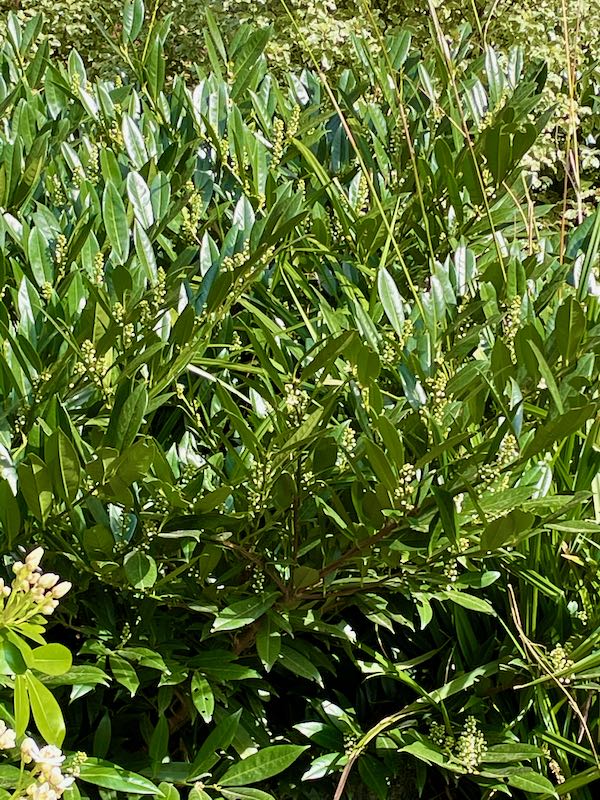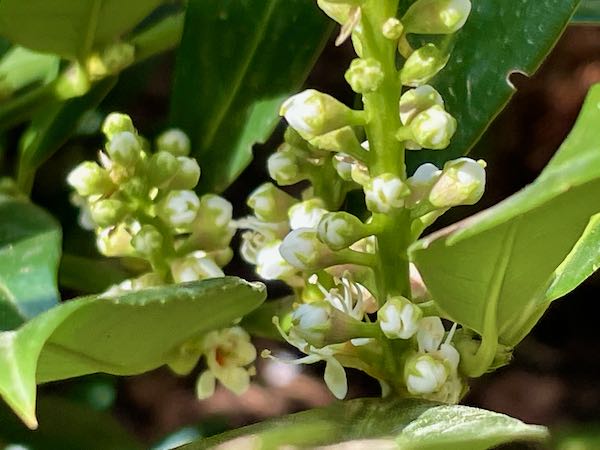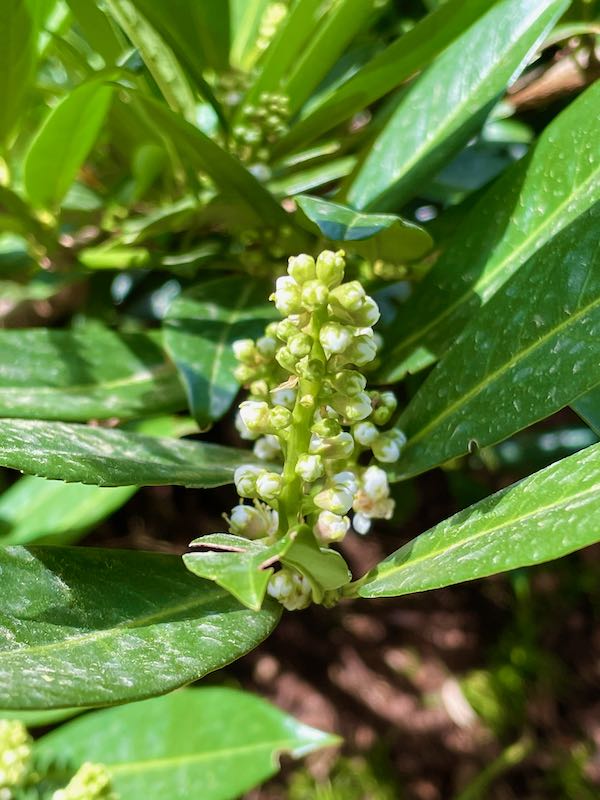Prunus laurocerasus is an evergreen shrub belonging to the Rosaceae family of plants. Its native range encompasses the Black Sea regions, southwestern Asia, southeastern Europe, the Caucasus, and northern Iran. This versatile plant is known by various names, including Cherry Laurel, Common Laurel, Versailles Laurel, and English Laurel.
As an evergreen species of cherry, Prunus laurocerasus displays dense and erect branches. The specific epithet “laurocerasus” is derived from the resemblance of its leaves to those of the bay laurel, despite the two plants being unrelated. The foliage of Prunus laurocerasus is a lush and vibrant dark green, with leaves growing up to 6 inches or 15 centimeters in length. In mid-summer, this shrub graces its surroundings with delicate creamy-white flowers, emitting a delightful fragrance. Following the flowering period, purplish-black berries emerge, adding further visual interest to the plant.

How to grow Prunus laurocerasus:
To ensure the successful cultivation of Prunus laurocerasus, it is advisable to provide a suitable growing environment. The plant thrives when grown in a location that receives either full sun or partial shade. When selecting the planting site, it is important to consider the climatic conditions. In hot climates, some shade is crucial to protect the plant from excessive heat stress.
Regarding soil preferences, Prunus laurocerasus favors organically rich and well-drained soil. The soil should retain adequate moisture without becoming waterlogged, as excessive waterlogging can lead to root rot and other issues. Regular watering is necessary, particularly during dry spells, to maintain optimal moisture levels for the plant’s health and vigor.
Pruning can be performed if necessary, and it is typically done after the flowering period. This helps maintain the desired shape and size of the shrub. When pruning, it is important to use sharp and clean tools to minimize the risk of disease transmission.

Prunus laurocerasus can be propagated through semi-ripe or hardwood cuttings, which involve taking a portion of the stem with mature growth and encouraging it to root in a suitable growing medium. Additionally, propagation by seed is also possible, although this method requires more time and patience for the plant to reach maturity.
One of the remarkable qualities of Prunus laurocerasus is its ease of cultivation. It is generally disease-free and resistant to common pests. However, vigilance is necessary to detect and address any potential issues. Watch out for vine weevils, leaf-mining moths, or powdery mildew, which can occasionally affect the plant’s health and appearance. Regular inspection of the foliage and appropriate pest management practices will help ensure the longevity and vitality of the shrub.
It is crucial to note that the leaves and fruits of Prunus laurocerasus contain toxins that are harmful to humans if ingested. Therefore, it is important to exercise caution and prevent any consumption of the plant’s parts.
By following these guidelines, you can enjoy the beauty and resilience of Prunus laurocerasus in your garden or landscape. Its lush green foliage, fragrant flowers, and ornamental berries make it a delightful addition to any outdoor space.




